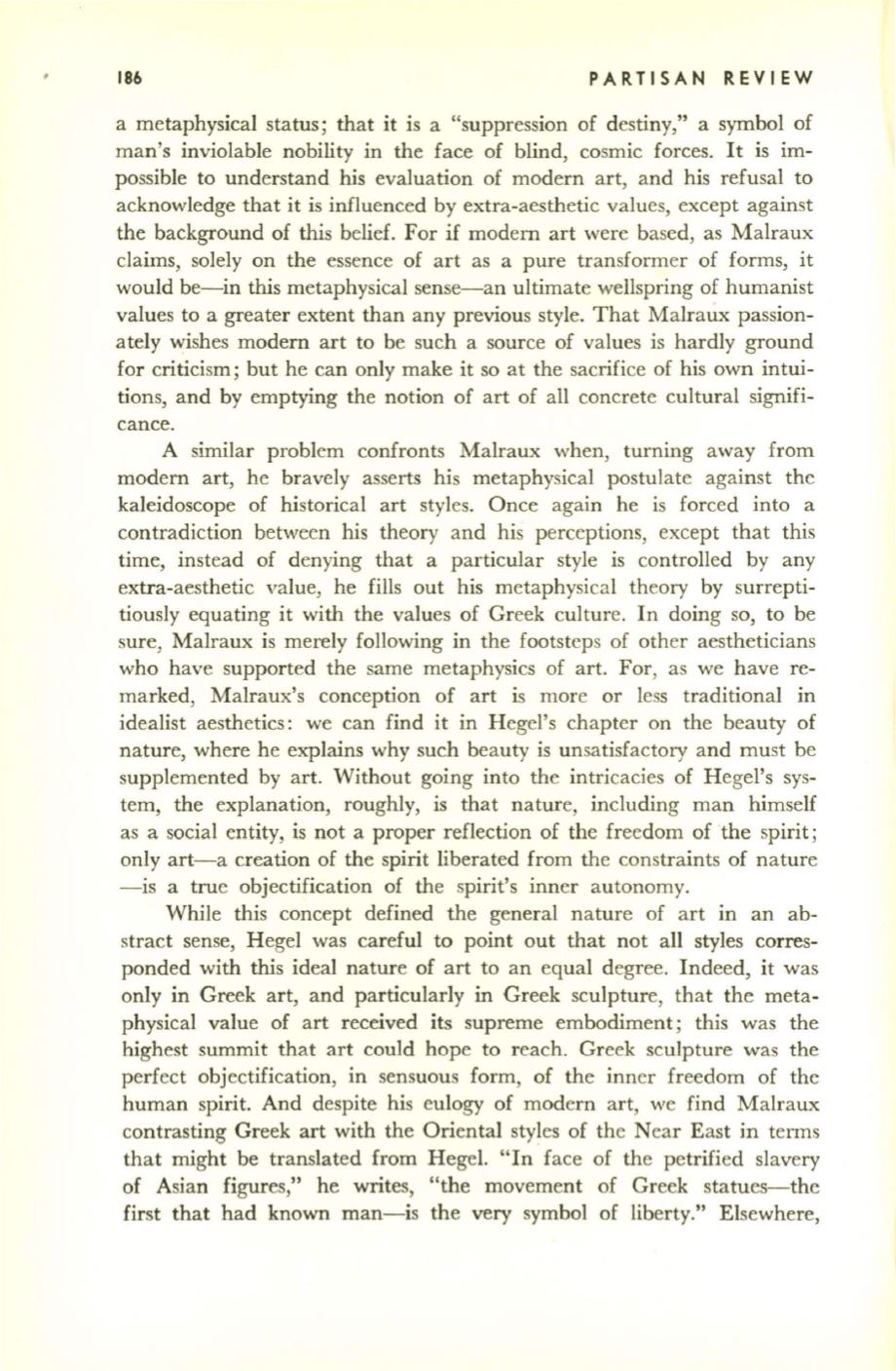
186
PARTISAN REVIEW
a metaphysical status; that it is a "suppression of destiny," a symbol of
man's inviolable nobility in the face of blind, cosmic forces. It is im–
possible to understand his evaluation of modern art, and his refusal to
acknowledge that it is influenced by extra-aesthetic values, except against
the background of this belief. For
if
modern art were based, as Malraux
claims, solely on the essence of art as a pure transformer of forms, it
would be-in this metaphysical sense-an ultimate wellspring of humanist
values to a greater extent than any previous style. That Malraux passion–
ately wishes modern art to be such a source of values is hardly ground
for criticism; but he can only make it so at the sacrifice of his own intui–
tions, and by emptying the notion of art of all concrete cultural signifi–
cance.
A similar problem confronts Malraux when, turning away from
modern art, he bravely asserts his metaphysical postulate against the
kaleidoscope of historical art styles. Once again he is forced into a
contradiction between his theory and his perceptions, except that this
time, instead of denying that a particular style is controlled by any
extra-aesthetic value, he fills out his metaphysical theory by surrepti–
tiously equating it with the values of Greek culture. In doing so, to be
sure, Malraux is merely following in the footsteps of other aestheticians
who have supported the same metaphysics of art. For, as we have re–
marked, Malraux's conception of art is more or less traditional in
idealist aesthetics: we can find it in Hegel's chapter on the beauty of
nature, where he explains why such beauty is unsatisfactory and must be
supplemented by art. Without going into the intricacies of Hegel's sys–
tem, the explanation, roughly, is that nature, including man himself
as a social entity, is not a proper reflection of the freedom of the spirit;
only art-a creation of the spirit liberated from the constraints of nature
-is a true objectification of the spirit's inner autonomy.
While this concept defined the general nature of art in an ab–
stract sense, Hegel was careful to point out that not all styles corres–
ponded with this ideal nature of art to an equal degree. Indeed, it was
only in Greek art, and particularly in Greek sculpture, that the meta–
physical value of art received its supreme embodiment; this was the
highest summit that art could hope to reach. Greek sculpture was the
perfect objectification, in sensuous form, of the inner freedom of the
human spirit. And despite his eulogy of modern art, we find Malraux
contrasting Greek art with the Oriental styles of the Near East in terms
that might be translated from Hegel. "In face of the petrified slavery
of Asian figures," he writes, "the movement of Greek statues-the
first that had known man-is the very symbol of liberty." Elsewhere,


